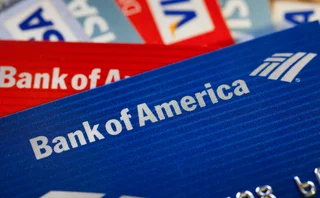Unified Nasdaq Platform Hits Snags
EXCHANGE TECHNOLOGIES
NEW YORK—The Nasdaq Stock Market last week experienced several technical glitches as it moved to roll out its new single book platform.
In August, Nasdaq started testing a single book for all securities traded on Nasdaq and the former Inet and Brut ECNs, following approval from the U.S. Securities and Exchange Commission (SEC) on July 14 (Inside Market Data, Aug. 7). That effort was rolled out on Oct. 30 for Nasdaq-traded stocks.
Nasdaq has "experienced intermittent technical issues since that rollout," says a Nasdaq spokesperson. "Most of those issues were related to the integration of Nasdaq's legacy data feeds, which are now consuming Inet data that is faster and larger than [the feeds] are used to."
Subsequently, Nasdaq found that message blocking, which is used to build efficiencies in transferring data, was not set correctly, according to another exchange spokesperson. Latency issues occurred on Nov. 1 between 9 a.m. and 12 p.m. for about 7 to 10 seconds, but were later fixed, Nasdaq says.
Nasdaq officials acknowledge that the glitches prompted some firms to move to other platforms, but they view it as a temporary issue and expect firms to return to Nasdaq since the problem has been rectified.
Nasdaq recently announced that as of Nov. 20, it would continue systems integration by migrating non-Nasdaq-listed securities currently on Brut to Inet. Nasdaq says it is moving them in advance of SEC approval due to customer requests. Brut FIX connections will be still be available as access points to the Inet book for posting, order execution and routing.
Meanwhile, Nasdaq officials say that they will delay the launch of the Crossing Network, originally planned for a Nov. 6 debut, "in order to provide more time for systems preparation," but could not elaborate further. The product, which has received SEC approval, will offer intraday and post-close crosses for all Nasdaq, New York Stock Exchange (NYSE) and American Stock Exchange listed securities. When implemented, the exchange says the Crossing Network will be fully anonymous, deeply liquid, free for the first six months after the launch and available for larger trades without market impact.
David Cummings, CEO of Bats Trading, says he "can empathize with Nasdaq's frustration over the technical glitches. We all spend much time and money building various redundancies into our systems, but there always seems to be one common component that unexpectedly fails and causes a temporary outage." Cummings maintains that "Bats subscribers quickly redirected their order flow until the problems were resolved."
Chloe Albanesius with Max Bowie
Only users who have a paid subscription or are part of a corporate subscription are able to print or copy content.
To access these options, along with all other subscription benefits, please contact info@waterstechnology.com or view our subscription options here: http://subscriptions.waterstechnology.com/subscribe
You are currently unable to print this content. Please contact info@waterstechnology.com to find out more.
You are currently unable to copy this content. Please contact info@waterstechnology.com to find out more.
Copyright Infopro Digital Limited. All rights reserved.
As outlined in our terms and conditions, https://www.infopro-digital.com/terms-and-conditions/subscriptions/ (point 2.4), printing is limited to a single copy.
If you would like to purchase additional rights please email info@waterstechnology.com
Copyright Infopro Digital Limited. All rights reserved.
You may share this content using our article tools. As outlined in our terms and conditions, https://www.infopro-digital.com/terms-and-conditions/subscriptions/ (clause 2.4), an Authorised User may only make one copy of the materials for their own personal use. You must also comply with the restrictions in clause 2.5.
If you would like to purchase additional rights please email info@waterstechnology.com
More on Trading Tech
After acquisitions, Exegy looks to consolidated offering for further gains
With Vela Trading Systems and Enyx now settled under one roof, the vendor’s strategy is to be a provider across the full trade lifecycle and flex its muscles in the world of FPGAs.
Enough with the ‘Bloomberg Killers’ already
Waters Wrap: Anthony interviews LSEG’s Dean Berry about the Workspace platform, and provides his own thoughts on how that platform and the Terminal have been portrayed over the last few months.
BofA deploys equities tech stack for e-FX
The bank is trying to get ahead of the pack with its new algo and e-FX offerings.
Pre- and post-trade TCA—why does it matter?
How CP+ powers TCA to deliver real-time insights and improve trade performance in complex markets.
Driving effective transaction cost analysis
How institutional investors can optimize their execution strategies through TCA, and the key role accurate benchmarks play in driving more effective TCA.
As NYSE moves toward overnight trading, can one ATS keep its lead?
An innovative approach to market data has helped Blue Ocean ATS become a back-end success story. But now it must contend with industry giants angling to take a piece of its pie.
BlackRock, BNY see T+1 success in industry collaboration, old frameworks
Industry testing and lessons from the last settlement change from T+3 to T+2 were some of the components that made the May transition run smoothly.
Banks seemingly build more than buy, but why?
Waters Wrap: A new report states that banks are increasingly enticed by the idea of building systems in-house, versus being locked into a long-term vendor contract. Anthony explores the reason for this shift.







